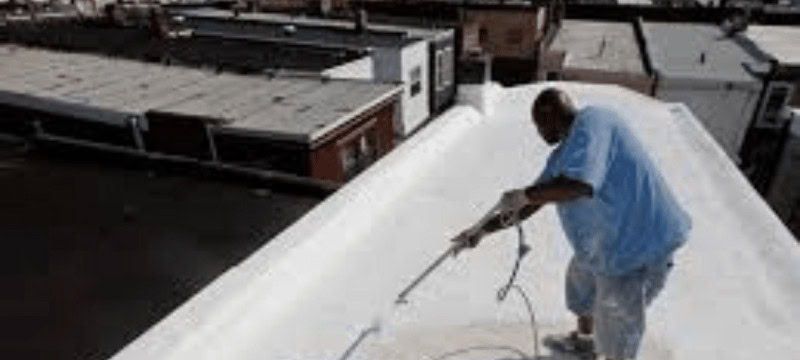Nowadays, you’ve likely encountered many social media ads claiming that their company’s white roof paint can significantly reduce indoor temperatures by up to 10 to 15 degrees Celsius in summer. They also promise waterproofing benefits. It’s widely believed that white paint reflects sunlight, effectively lowering temperatures, but the actual effectiveness of these claims remains in question.
About six years ago in Islamabad, Ejaz Ahmad Bhatti saw such an ad and decided to paint his roof with these products. He noticed a temperature difference indoors, though not as substantial as advertised.
Read more: Climate Change Raised US-Mexico Heatwave Probability 35 Times
According to Ejaz, while companies claim a temperature reduction of 10 to 15 degrees Celsius, the reality is closer to five to six degrees. Nevertheless, he acknowledges that even this reduction is significant in Pakistan’s intense heat.
In the past, traditional methods like covering roofs with mud or palm leaves were common to mitigate heat, but these practices are fading in favor of modern white paints containing various chemicals.

Distinction between standard paint and custom chemical formulations
In 2002, Wazirul Islam established a chemical and paint company in Islamabad. Among its various products, the company claims one effectively prevents moisture absorption and noticeably lowers indoor temperatures in buildings.
In an interview, Wazir Alam explained, “Many people paint roofs white to reflect sunlight, but standard white paints still absorb heat from sunlight, which doesn’t prevent absorption.”
Experts distinguish between two types of sunlight rays: ultraviolet (UV) rays, which carry light, and infrared rays, which transmit heat.

Wazir Alam explains that regular white paint reflects ultraviolet rays but lacks the ability to block infrared rays from the sun.
Similarly, Aqeel Iqbal, who owns a paint company in Islamabad, emphasizes the importance of ensuring that roof paint or chemicals penetrate well into the surface to effectively reduce heat intensity. He points out that inadequate absorption could lead to the paint being washed away by rain and failing to achieve its intended purpose.
According to Aqeel Iqbal, these chemicals effectively lower roof temperatures, enhancing the efficiency of air conditioners and fans inside homes. This efficiency allows air conditioners to cool rooms faster, reducing the workload on their compressors and potentially lowering electricity bills.
How is this chemical or paint typically applied to the roof?
Both Wazir Alam and Aqeel Iqbal claim that their white paint or chemical can be applied to the roof by an ordinary person without the need for an expert.
Wazir Alam advises, “Before application, ensure the roof is thoroughly cleaned of dust and dirt, then apply at least two coats of this paint.” He emphasizes that proper application ensures good absorption into the roof surface, enhancing durability. This allows the paint to effectively reflect sunlight and absorb heat, preventing moisture from entering the house walls.

What is the expert opinion on this matter?
Abrar Ahmed, a civil engineer from Buildcraft construction company, explained that specialized chemicals for roofs not only lower indoor temperatures but also benefit building integrity. He noted that these products can prevent issues like concrete or metal expansion and contraction across seasons, as well as mitigate roof leakage.
Studies from the China Southwest Architectural Design and Research Institute suggest that accumulation of dust, grease, and oil on white surfaces diminishes their reflective capacity, thereby reducing cooling effects.
Research conducted at the Berkeley Laboratory in California found that white roofs can reflect up to 80% of light and infrared rays, lowering temperatures by as much as 31 degrees Celsius during hot summers. It’s estimated that widespread use of cooling roof paint globally could significantly mitigate carbon emissions, potentially cooling up to 24 gigatons of carbon dioxide.
According to the Berkeley Laboratory, this effect is akin to removing 300 million cars from the road for 20 years, offering a cost-effective solution, particularly beneficial for economically disadvantaged countries.





